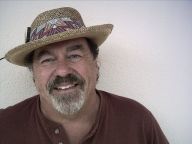
2008
Episode
15
Drummond
Electronics
2008
EPISODE 15
DRUMMOND ELECTRONICS
The paper ballot system of voting was first adopted
in Australia in 1856, in which voters marked off
their choices on the printed form and dropped
it in a sealed ballot box. Assuredly, the first ballot box
fire occurred sometime not long after. Political
bosses have always known that it’s not the votes that
count, but who counts the votes. The chaos in
the 2000 Florida presidential election was merely the
tip of an iceberg, experts had been predicting
would bob to the surface eventually.
The underlying problem, in addition to politicians’
inherent dishonesty, is that there are no federal
standards for what constitutes a vote or the voting
process. This is because the Constitution places
elections in the hands of 50 separate state governments
that in turn entrust the franchise to numerous
local counties, parishes, cities, towns, villages
and special districts. Until the 1970s, anyone could cobble
a voting machine and sell it to the local town
clerk, with results running from ludicrous to, in Florida’s
case, disastrous.
In the mid 70s, the federal government realized
the problem and within no time -- by 1994 -- the
Federal Elections Commission issued a set of voluntary
standards for various types of voting systems.
Three and half years after the disputed presidential
election in Florida, the newly created federal
Election Assistance Commission provided $2.3 billion
to state and local authorities to purchase new
equipment. Only one problem: the new equipment
available on the market was judged to be insecure
and unreliable. Coincidently, 80% of it was developed
and manufactured by Drummond Electronics,
and projected for use in 43 states.
One of the largest privately held, family-owned
companies in America, Drummond had been in the
voting machine business since Sloan Drummond’s
great grandfather founded the company in
Lockport, New York in 1896. Drummond was a locksmith
by trade but worked as a bookkeeper for
the nearby Erie Canal. Calling on his mechanical
dexterity, he applied the technology behind his office
adding machine to jerrybuild a mechanical voting
box for his hometown. It was so popular that four
years later, officials in nearby Rochester asked
him to supply them with 40 boxes, and the
Drummond Lever Voting Machine Company was born.
Over the years, as the company was handed down
from father to son, the name changed as the
technology moved from mechanical systems to electronics.
Mechanical machines lost favor due to
their numerous breakdowns, and were no longer
manufactured after the 1980s. In the 1930s,
punch cards and automatic card reader tally systems
took hold, especially in the South, primarily because
their difficulty of use maintained the de facto
disenfranchisement of the “Negroes.” The next breakthrough
came in the form of optical scanning in which
voters marked a ballot that was fed into a computerized
reader, similar to standardized testing or statewide
lotteries, which then tabulated the results.
The most current technology advanced by election
officials and the Drummond marketing department
combines a touch screen with something called
“direct recording electronics” (DRE). As with the old lever machines, there
is no physical ballot. A voter enters a small booth and chooses among candidates
and
propositions displayed on the screen. A keyboard
is provided to allow for write-in votes. The voters’
choices are immediately sent via an integral modem
and the internet to a central server, normally
located at the county elections board, to be tallied.
The problems with DRE are that there is no precinct
level tabulation nor paper trail to verify ballots in
case of a recount; not even a storage cartridge
to crosscheck the number of voters using the devices with
the number of votes cast. And no way for the individual
voter to verify that his selections were accurately recorded after tapping
“SEND.” Watchdog groups and state elections officials couldn’t understand
what
was so difficult about issuing a paper receipt
of the transaction in the same way Drummond’s thousands
of ATM machines did. They held up nationwide rollout,
and $1.5 billion in sales, for two years while the
company scrambled to reengineer a million voting
machines.
Adding a validation component was not all that
difficult. Adding one that would lie took considerably
more creativity. Sloan Drummond and a small cadre
of his best and most loyal engineers devised a
method by which a third party could direct each
DRE device to count only a percentage of an individual’s
vote as instructed and assign the remaining percentage
to the candidate of its choice. In other words,
if Sally votes for “A” for president, the device
could be told to give half of her vote to “A” and the other
half to “B,” while still issuing a receipt that
she had voted for “A.”
Of course that also meant that the third party
would need to be able to circumvent the election board’s
electronic security and communicate directly with
the devices. DREs were set up to accept input from
local officials only, and only up to election
day. This allowed voting officials to create the screens with
the candidates names and parties and any applicable
propositions, while preventing any monkey
business during the election itself. Theoretically,
there was no way the system could be hacked to
disrupt or corrupt the election results. Unless
a backdoor was built in at the factory.
Sloan Drummond understood the vagaries of voting
fraud. The practice of registering entire cemeteries; numerous political
toadies voting in multiple districts; even buying off whole elections’
boards in order
to alter the count were ineffective and much too
prone to exposure. Outcomes in precincts needed to
be in line with expectations. “B” couldn’t demolish
“A” when exit polling showed a 50-50 split.
By obtaining real time results online, Drummond
could instruct a precinct’s DREs to subtly alter the
percentage of individual votes to achieve only
the minimum outcome necessary to accomplish the
desired results. Just a few votes changed in selected
precincts could swing the outcome in tightly
fought battle ground states. And no one except
the A-Team would be the wiser.
Their black box was perfect. It would be used in
only the most critical of elections, and with the utmost
secrecy and delicacy. One of it’s first tests
would come during the Florida referendum on Trinity.
AUTHOR’S NOTE: The first mechanical voting machine
was used in Lockport, New York in 1896,
but Sloan Drummond’s great grandfather and the
Drummond Lever Voting Machine Company are
fictional. However, concerns about Direct Recording
Electronic (DRE) voting systems continue to
remain under the radar of the mainstream media.
In addition to the normal problems associated
with ballot security, computer glitches, reliable
modem access to servers, and the ability to verify
votes in recounts without benefit of a paper trail,
the use of DRE puts elections at the mercy of the
few companies that make the machines. Essentially,
private vendors are in the position to make
elections turn out anyway they desire with virtually
no means of detection.
Next in "Saecila:" The Holy Trinity Amendmennts
by Martin
Gresko

Interested in publishing
this manuscript?
Or to make comments,
CONTACT Martin Gresko at VGABONSUN@hotmail.com
See his biweekly
political column http://www.StPetePost.com
